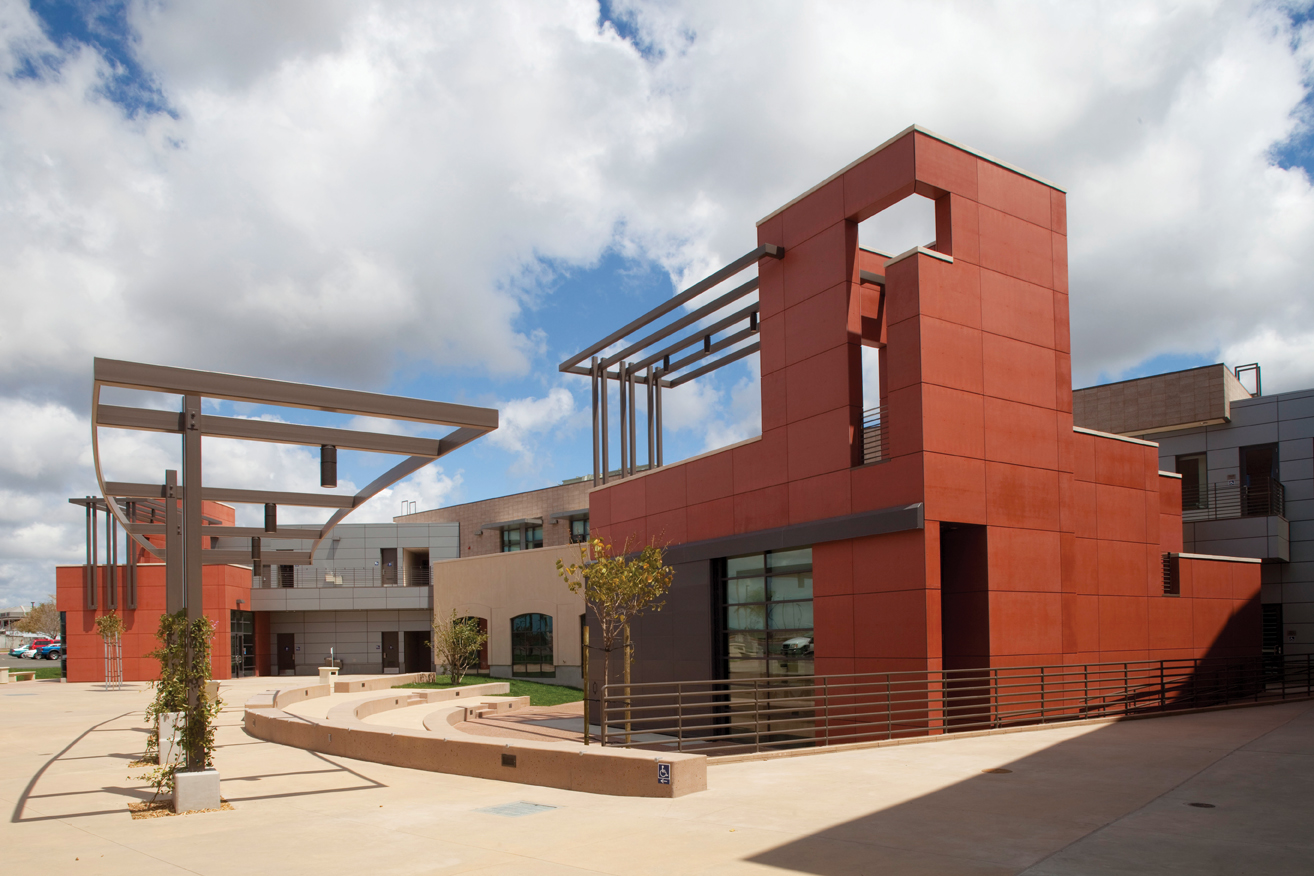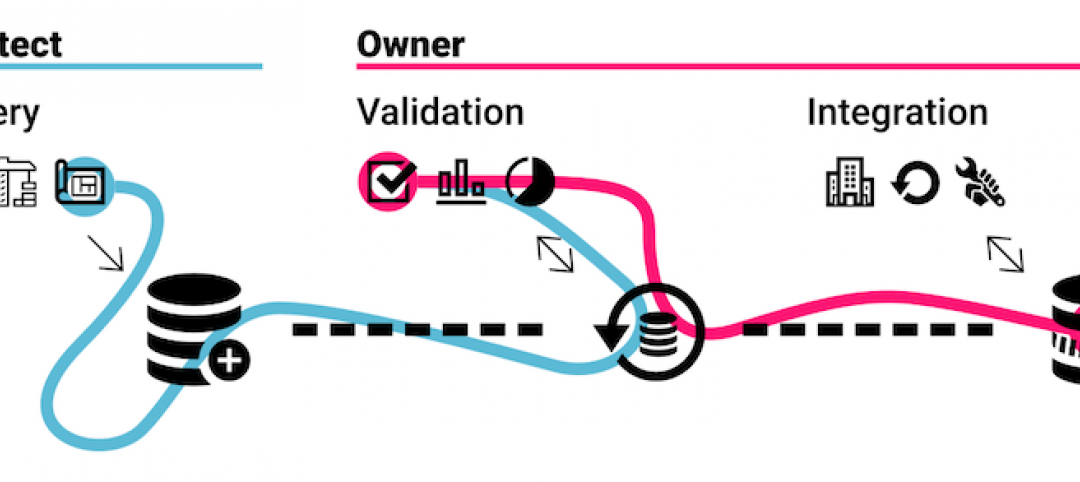Two innovations—program manager Gafcon’s SharePoint360 project management platform and a new BIM “wall creator” add-on developed by ClarkDietrich Building Systems for use with the Revit BIM platform and construction consultant—show how fabricators and owner’s reps are stepping in to fill the gaps between construction and design that can typically be exposed by working with a 3D model.
WEB BIM MANAGEMENT: SAVING TIME AND MONEY
Gafcon manages some of the biggest construction projects in Southern California as an owner’s representative and construction consultant. “Very significant time and money can be saved by combining cost, schedule, inspections, drawings, and financial information in one system accessed through a Web portal,” said CEO Yehudi “Gaf” Gaffen. “We found that a lot of contractors and design firms are involved in part of the building process to make their own delivery efficient, but there really wasn’t a tool devoted to the entire process, from design to construction.”
ALSO SEE: The world’s first building made from carbon-fiber reinforced concrete starts construction in Germany
In 2006 Gafcon created a sister company, SharePoint360, based in San Diego. Utilizing Microsoft’s SharePoint Web collaboration platform (with significant customization for building owner and construction company clients), SharePoint360 provides a portal to tie together all the AEC software used on a project. Industry-specific applications such as Expedition program management software from Primavera Systems can integrate data with SharePoint360, making that information available to all team members within a SharePoint site without purchasing additional licenses. Using SharePoint360’s model viewer, all Building Team members can view a Revit model no matter what stage of design or construction the project is in.
“We created an interface with Revit that enables owners and facilities managers to get the necessary data from Revit models for their needs and purposes without needing a Revit license,” Gaffen said. “Building engineers in the field can access the model (through the Mobilize360 mobile app) and navigate through it in the field to isolate problems using GPS coordinates. You can pull all documentation (including model and shop drawings), view it from the field, and mark it up in a tablet PC and automatically transfer that information back to the rest of your team.”
Because SharePoint360 is not a proprietary platform, any individual building project’s SharePoint website can be customized for that particular project’s needs. Most of the hosted sites that the company runs are turned over to building owners and facility managers after construction is completed, providing the owner with a record for later use in operations and maintenance.
“The knowledge of using SharePoint’s engine to drive specific applications is the intellectual property we have related to AEC,” Gaffen said. The contracts stipulate that the hosted sites can be transferred to another hosted platform.
SharePoint was the program management tool used for the renovation and expansion of three community colleges and six continuing education campuses in the San Diego Community College District, a $1.5 billion construction program that began in 2007. Using SharePoint360 reduced the number of software licenses necessary for the project by hundreds.
SharePoint360’s AEC industry-specific services include an NSPEC inspection module, intranet and extranets for building projects that offer real-time access to information from any location. The resulting business data allows Gafcon and its clients to track and report on important project information, including billable hours and employee progress. By analyzing this data project managers can run tighter ships as well as collaborate better.
Because SharePoint360 is not a proprietary platform, said Gaffen, “You’re not held hostage by one software vendor. The platform is agnostic and can tie into any line of business.”
REVIT ADD-ON AUTOMATES WALL CREATION
ClarkDietrich Building Systems, headquartered in West Chester, Ohio, is the largest manufacturer of cold-formed steel framing in the U.S. They also produce structural studs and joists, metal lath and accessories, and shaft wall studs and track. While the company maintains it can provide any cold-formed steel frame design necessary for commercial and residential construction, it kept running into problems with projects modeled in Revit, with information in a 3D model, that either wasn’t used properly, conflicted with itself, or had specifications made during construction.
“Everyone is making custom shapes and it’s all test-based,” based on STC or UL/fire rating, said Robert Warr, PE, director of engineering services at ClarkDietrich. “Small things like adding insulation or adding resilient channels can change your whole framing system profile.” Warr says his group talked to “some of the bigger architecture firms” and came away with the understanding that they wanted to put a high level of detail in their wall objects but needed an easier tool to work with than was currently available.
There are hundreds of different wall types being used in steel framing today; the ones that do have 3D BIM objects, ones that can be dropped into a model during design, were created by architects and BIM managers whose job it is to maintain Revit libraries for their entire firms. Consequently, accuracy across several projects was not always a priority. Warr and his team came up with a BIM Wall Creator add-on for Revit that’s database-driven and asks designers questions up front before construction, to eliminate a lot of what used to be a gray area.
“Information often doesn’t match between an STC rating and a fire rating,” Warr said. The new tool “gives architect an accurate picture for both ratings,” he says.
BIM Wall Creator allows you to specify if you want to design a wall for limiting height, an STC rating, a UL rating, a LEED specification, or some combination of these factors. The wall is then built inside Revit by the add-on as a new object. All information about wall height, STC rating, UL rating, and LEED is saved into the model for use downstream by fabricators and contractors.
The Wall Creator is a free add-on for Revit and has a link to the fabricator’s product submittal system. ClarkDietrich is developing additional features, such as shaft wall framing, for 2012 release. BD+C
Related Stories
Sponsored | BD+C University Course | Oct 15, 2021
7 game-changing trends in structural engineering
Here are seven key areas where innovation in structural engineering is driving evolution.
AEC Tech Innovation | Oct 7, 2021
How tech informs design: A conversation with Mancini's Christian Giordano
Mancini's growth strategy includes developing tech tools that help clients appreciate its work.
Digital Twin | May 24, 2021
Digital twin’s value propositions for the built environment, explained
Ernst & Young’s white paper makes its cases for the technology’s myriad benefits.
AEC Tech | Mar 4, 2021
The Weekly show, March 4, 2021: Bringing AI to the masses, and Central Station Memphis hotel
This week on The Weekly show, BD+C editors speak with AEC industry leaders about the award-winning Central Station Memphis hotel reconstruction project, and how Autodesk aims to bring generative design and AI tools to the AEC masses.
AEC Tech | Jan 28, 2021
The Weekly show, Jan 28, 2021: Generative design tools for feasibility studies, and landscape design trends in the built environment
This week on The Weekly show, BD+C editors speak with AEC industry leaders from Studio-MLA and TestFit about landscape design trends in the built environment, and how AEC teams and real estate developers can improve real estate feasibility studies with real-time generative design.
AEC Tech | Nov 12, 2020
The Weekly show: Nvidia's Omniverse, AI for construction scheduling, COVID-19 signage
BD+C editors speak with experts from ALICE Technologies, Build Group, Hastings Architecture, Nvidia, and Woods Bagot on the November 12 episode of "The Weekly." The episode is available for viewing on demand.
Smart Buildings | Oct 26, 2020
World’s first smart building assessment and rating program released
The SPIRE Smart Building Program will help building owners and operators make better investment decisions, improve tenant satisfaction, and increase asset value.
BIM and Information Technology | Oct 8, 2020
4 challenges of realizing BIM's value for an owner
In recent years, we have found our consulting practice engaging more and more with owners that are questioning the value of BIM and how they can make use of potentially data-rich BIM assets.
AEC Tech | Feb 5, 2020
BIM London: A glimpse of BIM discussions across the pond
Digital twin, ISO standards, blockchain, and data were the hot topics at the recent The Digital World: BIM event.
Building Technology | Mar 6, 2019
Australia’s prefab construction sector is trying to break out from its 'getting there' stage
A paper by Deloitte looks back at an origin case study. But the country has yet to develop a fully formed industry.

















